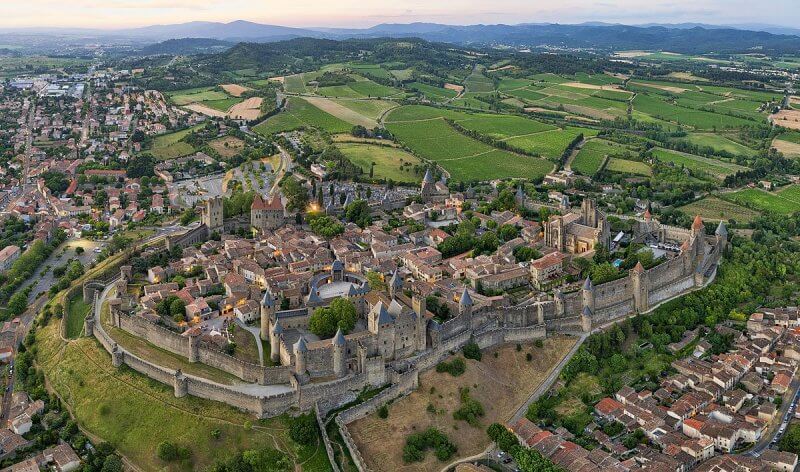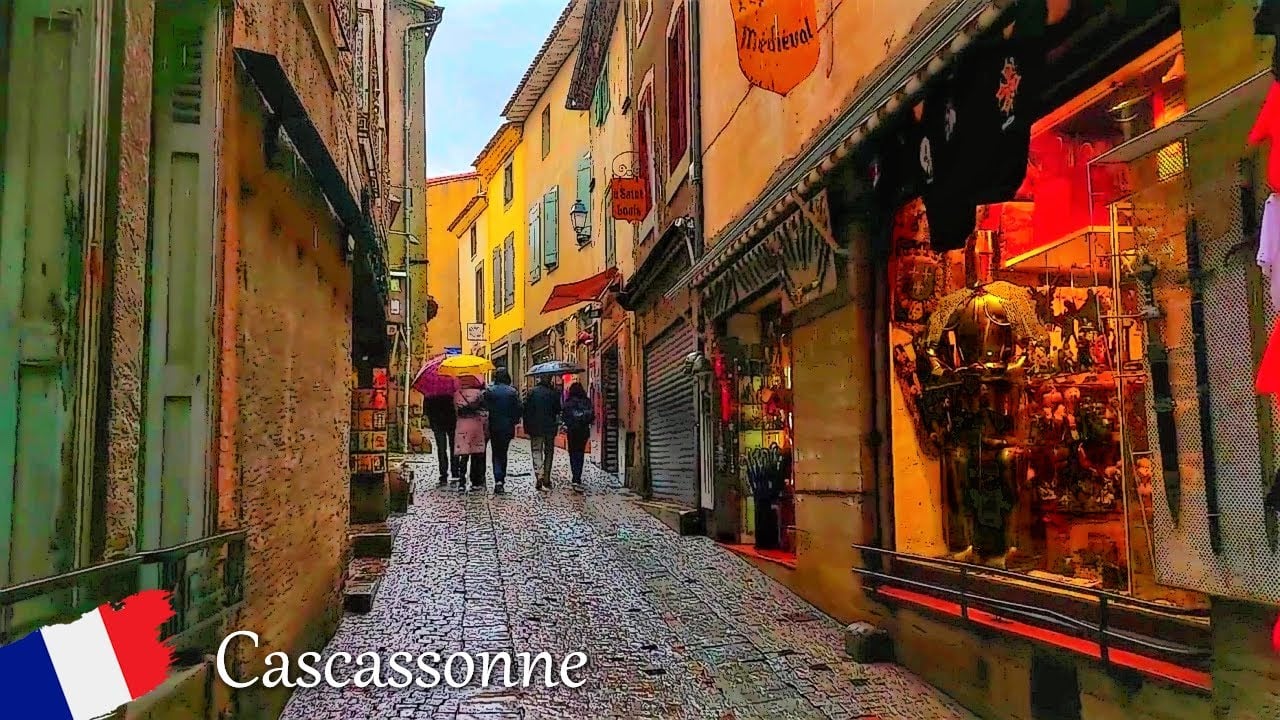In the south of France, in the province of Languedoc-Roussillon, lies the small town of Carcassonne. Southeast of the town, on the right bank of the Aude River, on a rocky hill stands the medieval fortress of Carcassonne. Essentially, it is a whole architectural ensemble and one of France’s most interesting open-air museums.
Historical Background
The fortification of Carcassonne has witnessed a rich history of France.
On the banks of the Aude River, where the town now stands, there was a primitive human settlement as early as the Iron Age. The fortress appeared on this site in the 2nd century BC.
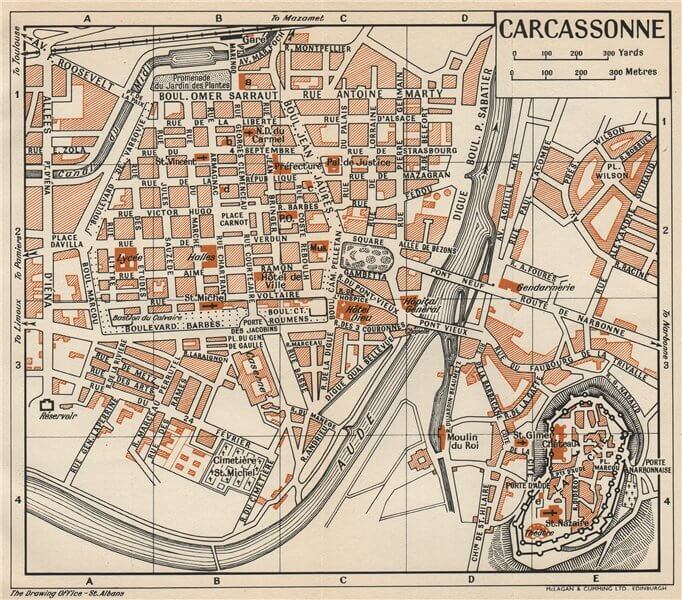
Carcassonne became a fortified defensive structure with a settlement hidden behind its walls during the Middle Ages, specifically from 1080 to 1210, when it was owned by the Trencavel Viscounts. The Middle Ages were a time of prosperity for Carcassonne, linked not to conquests but to the trade activities that merchants actively conducted with the East.
When Carcassonne was captured by Saint Louis, he ordered the construction of another wall around the existing fortress wall. The small gap between the walls created a “death ditch” – a trap for enemies who had taken the outer wall. But Philip the Bold, the son of Louis, decided not to stop there: he made Carcassonne the most fortified and inaccessible fortress in Europe. Therefore, during the Hundred Years’ War, the English, who repeatedly tried to capture the fortified city, failed to do so.
In the 17th century, when the Pyrenees Treaty established a new border between France and Spain, the fortress lost its strategic significance. It was abandoned, and by the early 19th century, no one lived there. Meanwhile, new quarters of Carcassonne – La Bastide – developed on the other bank of the Aude River.
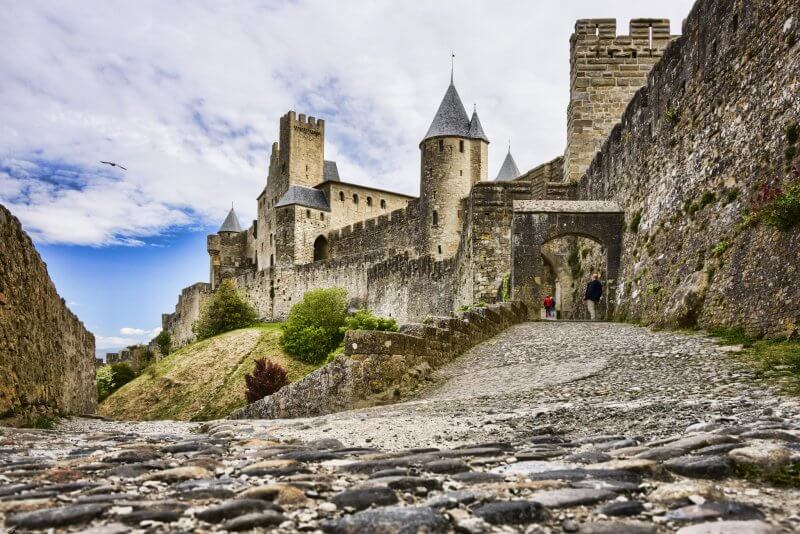
In the 1880s, Prosper Mérimée, who was responsible for the preservation of France’s landmarks, was so impressed by the remnants of the old castle that he obtained permission from the authorities to carry out restoration work. The work continued for ten years but then ceased due to budget constraints. Soon after, journalist and historian Jean-Pierre Cros-Mayrevieille wrote a series of publications drawing public attention to the decaying Carcassonne. As a result, in 1853, Napoleon III ordered the complete restoration of the city-fortress, led by Eugène Viollet-le-Duc.
In 1997, the Carcassonne fortress was added to the UNESCO World Heritage List.
What is Located within the Complex
Many tourist guides and tour operators refer to Carcassonne as a castle. However, the vast Carcassonne only resembles a castle in appearance and only in some parts. In reality, it is a town situated behind double, utterly impregnable walls. The fortress walls stretch almost 3 km, and along their entire length are 52 towers. The medieval settlement contains many attractions: a basilica, a castle, towers, an old cemetery, and even a haunted house. Today, modern restaurants, cafes, and souvenir shops also operate successfully there.
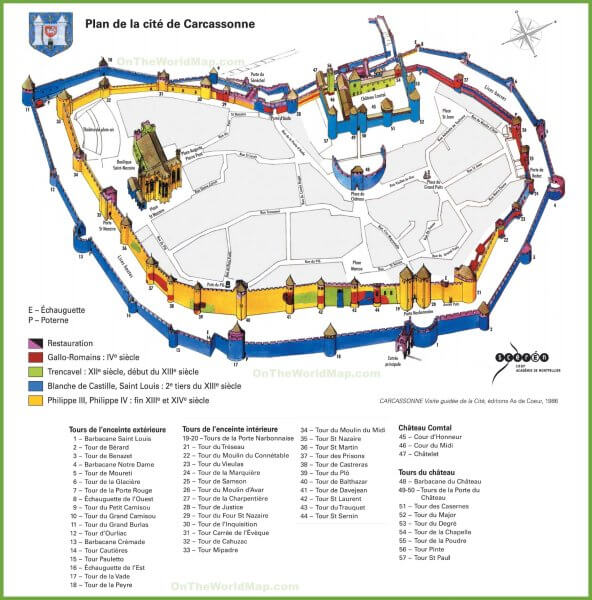
Narbonne Gate
The main entrance to the complex is the Narbonne Gate. Conveniently for tourists, a spacious paid parking lot is located nearby.
The gate is situated on the eastern side, facing Narbonne, hence the name Narbonne Gate. They were designed during the time of Philip the Bold, around 1280.
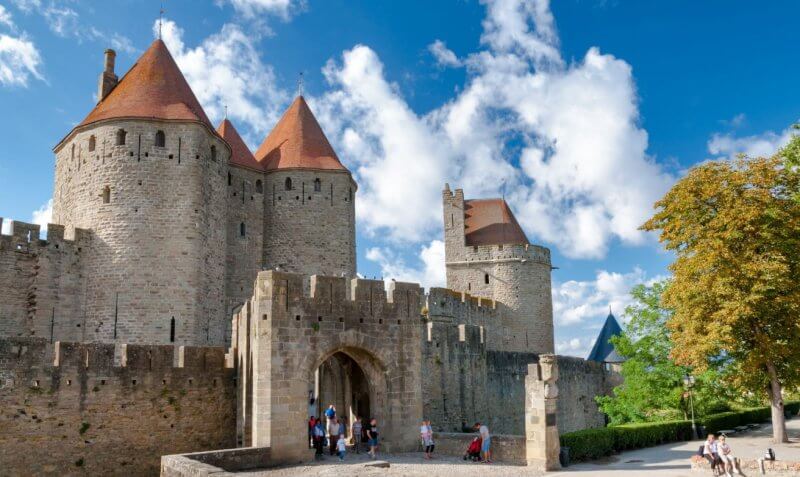
During the reconstruction, Viollet-le-Duc restored the battlements and roof of the towers and created a pseudo-drawbridge that did not previously exist. The northern tower is equipped with a deep cistern for water storage, while the southern tower has a large cellar.
To protect the arched gate through which carts could enter the town, a system of grids and loopholes was provided. From evening until morning, the road was blocked by a massive chain.
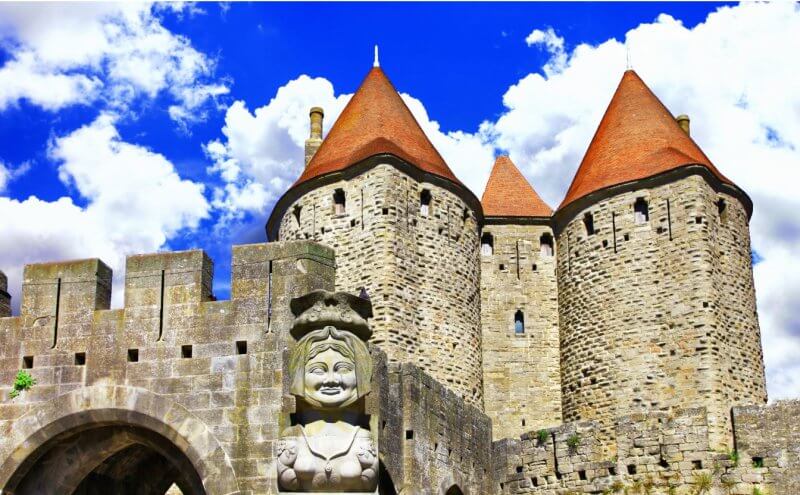
In front of the gates of the Carcassonne castle stands a statue of the Saracen lady Carcas, who, according to legend, drove away the soldiers of Charlemagne from the city walls in the 8th century. A statue of the Virgin Mary is also installed in a niche above the gate.
Comtal Castle
In the western part of the city-fortress lies the Comtal Castle. This is the castle of the Trencavel Viscounts, built between 1130 and 1150.
The walls, towers, gates, and passages form the most complex system within the complex. The castle consists of two L-shaped buildings, with the tallest watchtower in Carcassonne, the Pinte Tower, rising above them.
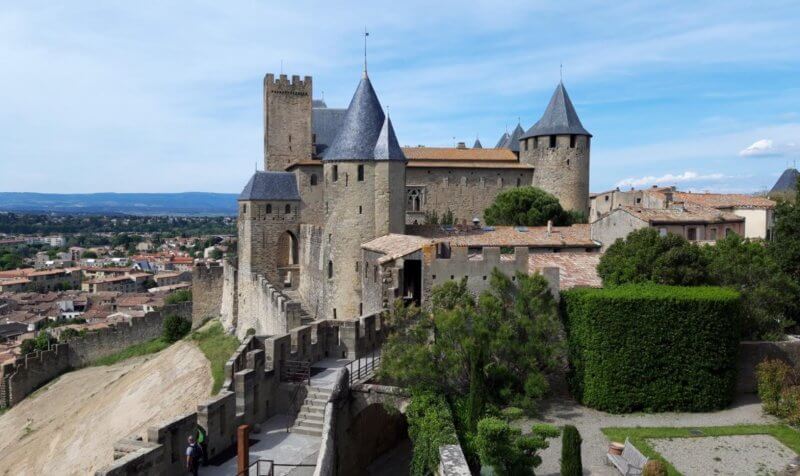
The Comtal Castle has nine towers, five on the eastern side and two flanking the entrance door. Since the castle is surrounded by a moat, a bridge consisting of a drawbridge and a fixed part leads to this door. The castle has its own access road to the bridge, protected by walls on both sides.
The main rectangular courtyard, uniting the castle buildings, is covered with a mosaic spanning almost 40 square meters.
Basilica of Saint-Nazaire
On the opposite side of the city-fortress from the Narbonne Gate, just 100 meters from the Comtal Castle, stands the Basilica of Saints Nazarius and Celsus. It was built in the 11th century and reconstructed and expanded in the 13th and 14th centuries. Despite its asymmetry making it seem unfinished, the building is enormous compared to the size of the city-fortress. The structure combines Gothic and Romanesque styles, with a facade adorned with numerous gargoyles and pinnacles.
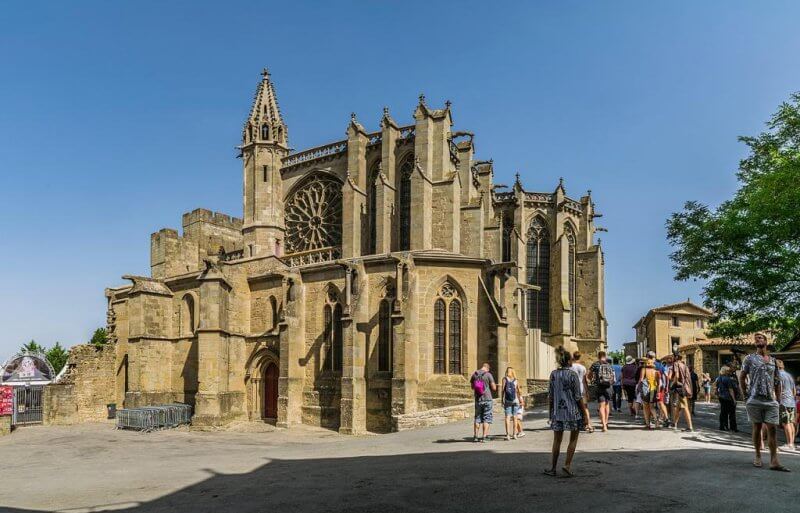
Until 1803, when a new church was built in La Bastide, the Cathedral of Saint-Nazaire was the main religious center of Carcassonne. Along with its demotion to a basilica, the interior also changed: it became perpetually damp and cold.
Despite the dampness and cold, tourists stay inside the basilica for a long time, drawn by its stained glass windows – the most beautiful in southern France. At the altar, a glass stained glass wall glows with different colors. The most impressive are the choir’s stained glass windows, almost in their original form from the 13th-14th centuries, and two large rose windows. The especially remarkable northern rose, dedicated to the Virgin Mary, creates a visual effect of rotation if stared at for a long time.
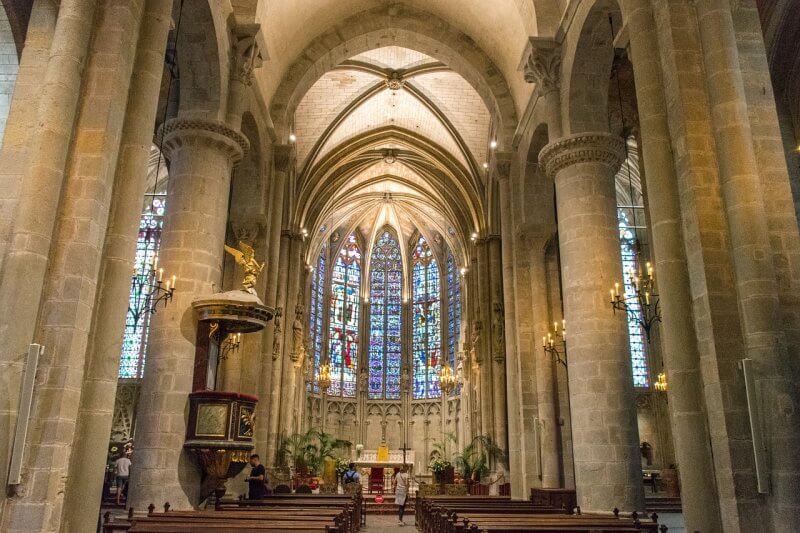
Another noteworthy feature of the basilica is its organ, the oldest in France, dating back to 1522.
Museum of the Inquisition
Carcassonne fortress in France was chosen for such a museum because the first ecclesiastical court was held there in 1215.
The museum displays instruments used by inquisitors to extract confessions from heretics, as well as execution devices. There are racks, garrotes for strangulation, skull-crushing devices, and a guillotine.
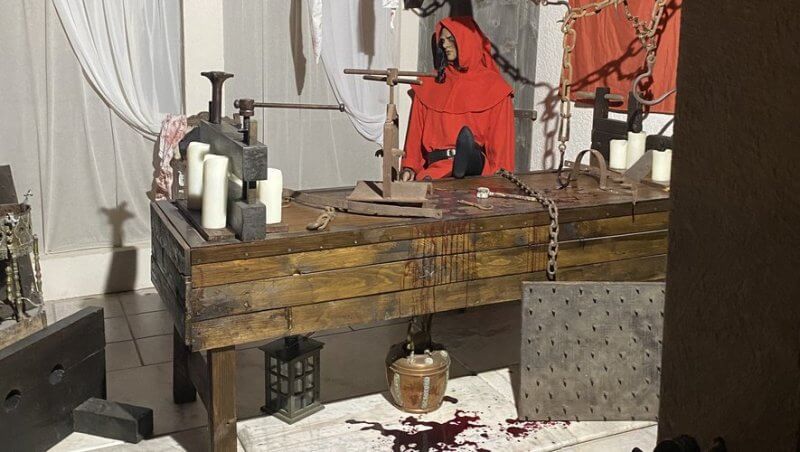
Among the exhibits are also devices not used by the Inquisition but reflecting the treatment of women in medieval France. These include shame masks used to subdue wives and chastity belts.
The museum even contains a much later addition – an electric chair.
Haunted House
The Haunted House Carcassonne attraction is suitable for horror enthusiasts. It exists in two versions: one for adults and one for children. Both versions follow the same principle: a person enters a dark room where eerie creaks and scratches are heard, along with special effects. Visitors get the impression that they are in a haunted room.

Parents should consider whether such an attraction is necessary for their child, as France offers more exciting and educational attractions.
Cité Cemetery
At the exit of the architectural complex is another notable site – the Cité Cemetery. It features not only ancient graves but also more modern ones, all designed in a consistent style.
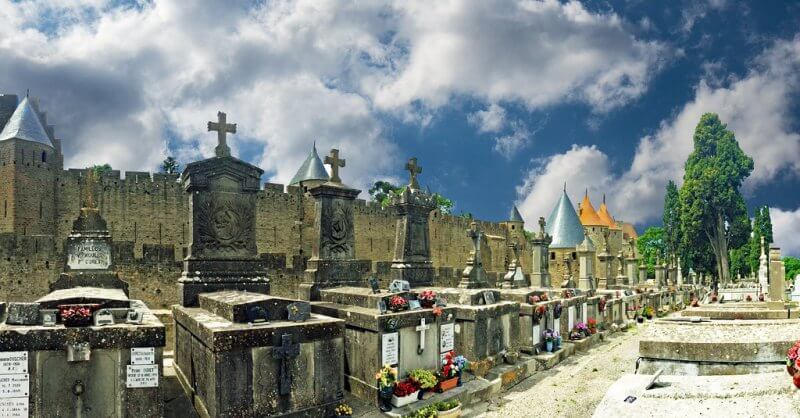
Practical Information
The Carcassonne fortification complex is located in Carcassonne, France.
Official website: www.remparts-carcassonne.fr.
The medieval city is open every day of the week. The Comtal Castle can be visited from April to September from 10:00 to 18:15, and from October to March from 9:30 to 16:45.
Admission Fees
One option for exploring the fortification complex is a self-guided tour. In this case, the ticket price for adults is €9.50, while those under 18 can enter for free. For groups of 20 or more, each ticket costs €7.50. To enhance the visit, an audio guide (available in French, English, and Spanish) can be rented for €3.00, lasting 90 minutes.
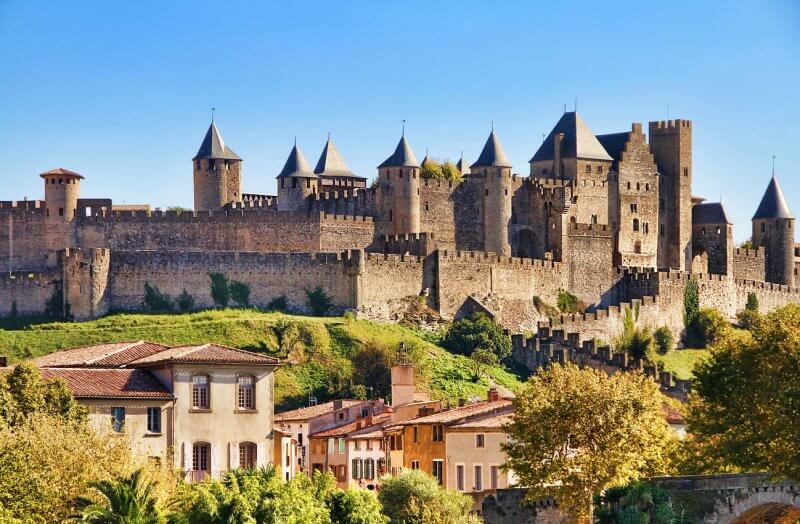
Guided tours are also available. A guided tour ticket costs €13.00 for adults, €8.00 for ages 7 to 17, and is free for children under 7. For the latest information on tours, visit the official website.
Tickets can be purchased online here: Buy Tickets.
Interesting Facts and Useful Tips
- There is a legend about the origin of the name “Carcassonne.” According to an archival document, in 20 BC, the fortress was listed as a “colony belonging to Julius Carcasso.”
- Tourist groups often gather several kilometers from the fortress, as this distance offers the best panoramic photos of the fortress. Many historical films, such as those about Robin Hood and Joan of Arc, were filmed in Carcassonne.The realistic medieval setting of this French castle is hard to find elsewhere in Europe. It was also used for Harry Potter films.
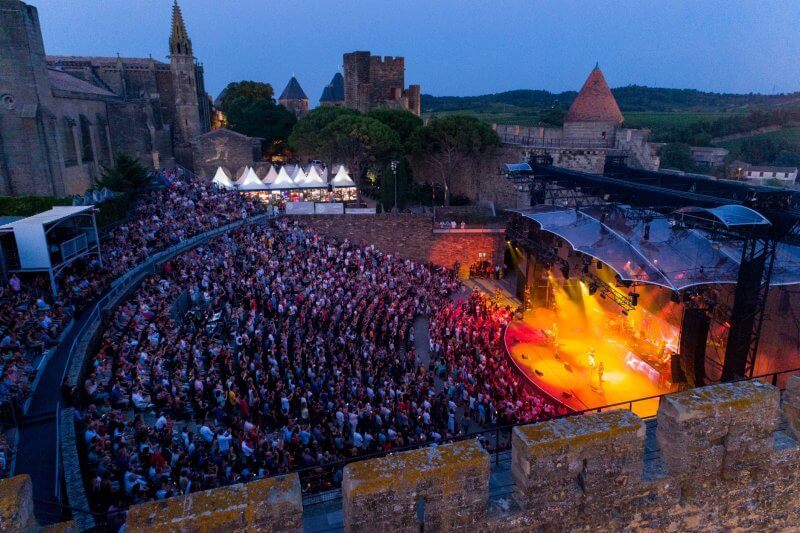
- In the summer months, the old town hosts festivals with theatrical performances about medieval times. Information about the events is always published on the official website.
- The roofs of the towers are dark gray because they are made of slate, a material often used in northern France. In Carcassonne, roofs were mainly made of tiles, as slate was rarely used in the south due to its tendency to heat up under the sun. Using slate is one of the most apparent mistakes of the 19th-century restorers.
- Visitors cannot get lost in the vast ancient town, as there are signs in English at every step. There’s no need to buy a guidebook unless as a souvenir.
- Two legends surround the statue of the Virgin Mary above the Narbonne Gate. Firstly, if you look closely, it seems that the Virgin Mary leans slightly to one side. It is said that she took this pose when archers aimed at her. Secondly, it is said that the Virgin Mary originally held baby Jesus, but he disappeared in the 14th century with no signs of damage to the statue.
- The organ in the Basilica of Saint-Nazaire is considered an excellent instrument. Famous organists come to play free concerts there annually, on Sundays from June to September.
- The people of France commemorated those who preserved the Carcassonne fortress by erecting statues of Eugène Viollet-le-Duc and Jean-Pierre Cros-Mayrevieille in the ancient town.
Cannes, France: A Guide to the City’s Best Attractions

